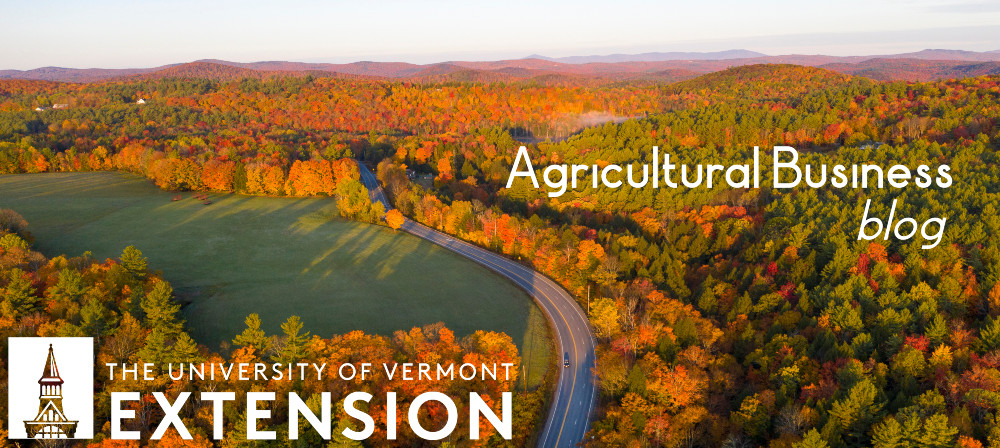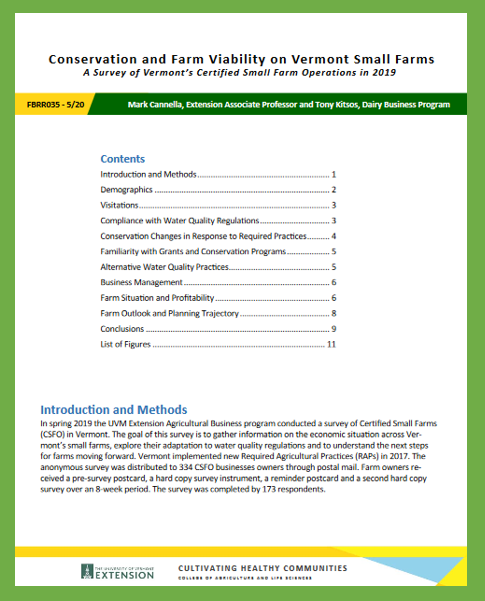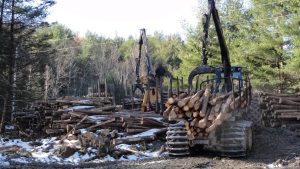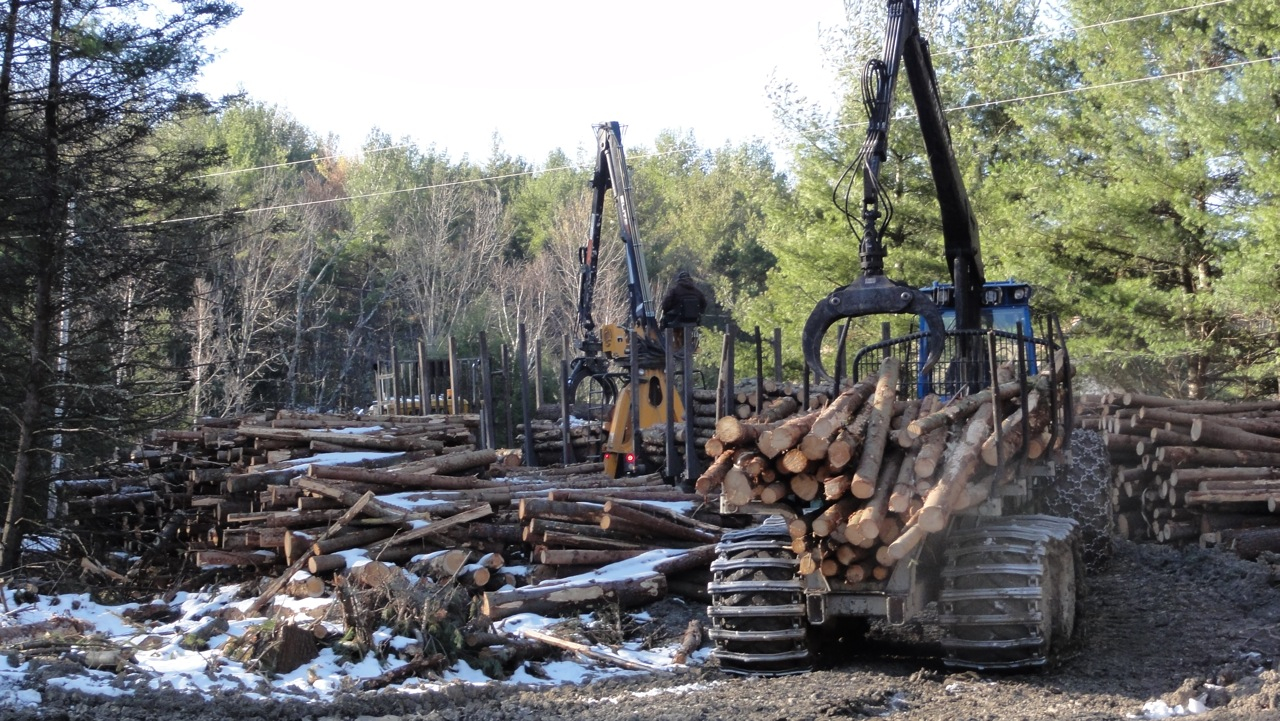UVM Extension has released a report that documents conservation adoption and economic viability on Certified Small Farm Operations. Conservation and Farm Viability on Vermont Small Farms (FBRR035) is available online. This report summarizes responses from over 170 Vermont farms to a 2019 survey. UVM Agricultural Business explores the current situations that business owners face and the major issues moving forward.
Category Archives: Conservation
UVM Maple Development Webinar Series Starts in August
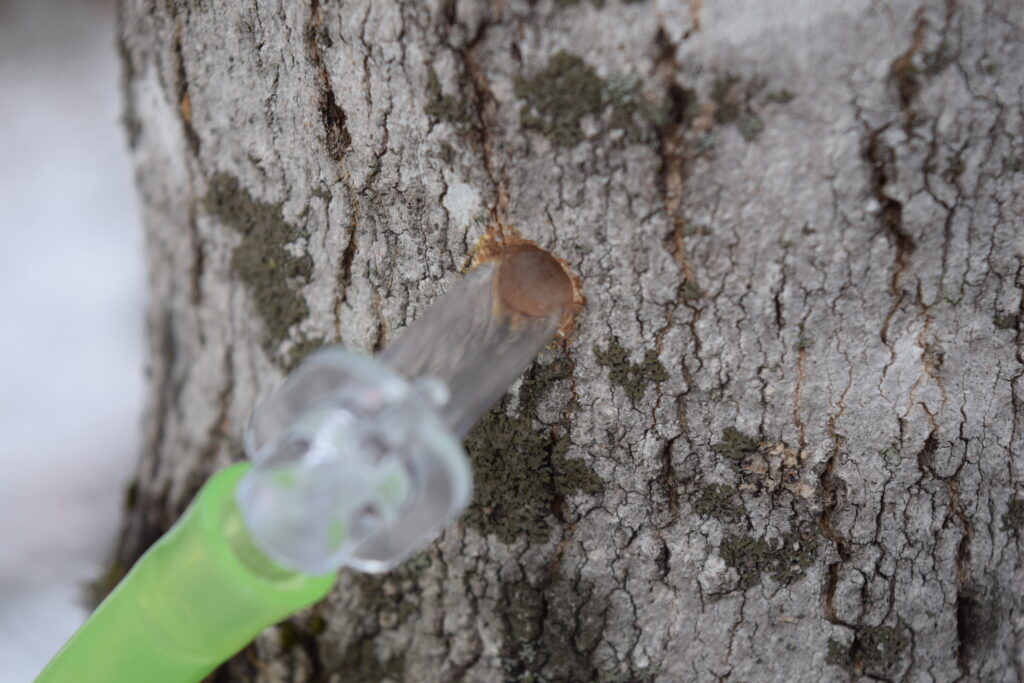
University of Vermont maple specialists will host a series of online webinars focused on business decision making and forestry practices. Learn about the best practices to integrate business management and sugarbush management for a thriving maple enterprise that targets profits and forest health.
Session information and registration is now available for sessions on August 5th, August 19th, September 2nd and September 16th. Watch our website for an updated schedule advertising webinar topics for October- December. Register now on the Upcoming Events page at www.maplemanager.org or download the program schedule here: UVM Maple Webinar Schedule
Topics will include: sugarbush leases, rental rates, business planning, tapping practices to optimize yield, tapping red maples, business entity set-up, sap-only enterprises and more. Presenters will include: Abby van den Berg (Research Associate Professor), Mark Isselhardt (Maple Specialist), Mark Cannella (Extension Associate Professor), Chris Lindgren (Forest Business Coordinator), attorneys, foresters and industry specialists.
Spring Has Sprung – a Gasket!
by Tony Kitsos
This spring has been quite a challenge, to say the least! Weather reports across the state talk about rain in some location on any given day, and that makes us a bit grumpy! We’ve waited all winter to get this year’s crops in the ground and take first cut off — and here it is June 5th with plenty of work to do on most farms.
On a recent early-June drive from Morrisville to Middlebury I saw a good many cornfields un-spread, un-plowed, and unplanted. And the window for getting a mid-May first cut in and covered was slammed shut by a month with rainfall 4” over the historical average. The New Englander’s adage of a year’s seasons being 4 months of winter and 8 months of damn poor sleddin’ has held court. It seems that if there’s less that can be done in the field, it hampers doing other projects – just don’t want to get wrapped up in anything else in case the weather breaks and it’s time to head to the fields.
All well and good, but while we wait, we need to turn our attentions to another season that’s upon us… Construction season. As if having too much water in the fields isn’t enough, there’s plenty of mud hanging around the farmstead and making quite a mess! It’s pointing out some of the high-risk areas that need to be filled in, drained, graded, or whatever is needed to minimize farmstead runoff into our waterways. Take the opportunity to find areas needing attention. Do some easy fixes. And be sure that we’re all responsible for containing runoff when and where it occurs.
UVM Agricultural Business has funds to help you assess the financial feasibility of some of the more comprehensive projects. We work independently, or with NRCS and VAAFM staff to help you find the best, most cost-effective solutions to most any water quality situation. Give us a call at the St. Albans office at 802-524-6501 and ask for Tony Kitsos. I’m looking forward to starting the conversation.
Ecosystem Services Valuation – What is it, and should we look at farming practices differently?
By Tony Kitsos
In my opinion, any discussion concerning ecosystems and the services we gain from them must begin with the teachings of conservationist Aldo Leopold. In his seminal book, A Sand County Almanac, published in 1949, Leopold wrote on “The Land Ethic”:
The land ethic simply enlarges the boundaries of the community to include soils, waters, plants, and animals, or collectively: the land. This sounds simple: do we not already sing our love for and obligation to the land of the free and the home of the brave? Yes, but just what and whom do we love? Certainly not the soil, which we are sending helter-skelter down river. Certainly not the waters, which we assume have no function except to turn turbines, float barges, and carry off sewage. Certainly not the plants, of which we exterminate whole communities without batting an eye. Certainly not the animals, of which we have already extirpated many of the largest and most beautiful species. A land ethic of course cannot prevent the alteration, management, and use of these ‘resources,’ but it does affirm their right to continued existence, and, at least in spots, their continued existence in a natural state. In short, a land ethic changes the role of Homo sapiens from conqueror of the land-community to plain member and citizen of it. It implies respect for his fellow-members, and also respect for the community as such.
Leopold saw the value in land “conservation,” understanding that we must be able to both use, and preserve, that which we dwell upon – not only for monetary gain but for our very existence as a species.
Enter the discussion on valuing the conservation of habitat. Ecosystem Services Valuation (ESV) can be thought of as placing emphasis on “ecosystem services” by making an explicit link between the functions of nature and the subsequent benefits (goods and services) provided to society as a result of those functions. The “goods,” such as milk, beef, seafood, forage, timber, biomass fuels and natural fiber are easy to account for and important to human welfare. They usually have monetary value and are accounted for in the traditional functioning of our economy. The “services,” on the other hand, are just as valuable but are not accounted for in the consumer market. In other words, we do not directly pay for our use of them. They provide basic life-support functions, such as clean air, clean water, flood attenuation, carbon storage and sequestering, nutrient cycling, and biodiversity, to name a few.
But should we place economic value on these services? And if so, who should pay? With Legislation beginning in 1948 through today, dozens upon dozens of legislative actions at both the federal and state levels aimed at conservation and environmental protection have been passed. Most recently, Act 64, Vermont’s Clean Water Act, came on the scene, requiring farm businesses to adopt a wide array of practices geared towards improving the water quality of our state. With a combination of grants from NRCS EQIP and VAAFM BMP sources, farms can receive significant cost share towards implementation of these practices. However, the residual costs become the responsibility of the farmer and when profit margins are razor thin at best, those costs are daunting.
Are Vermonters receiving more value than just a new manure pit or barnyard to control unwanted direct discharges? What of the ecosystem value down the road – what value should be placed on land that must be maintained and farmed in specific ways? And does the product produced become more valuable? Should those goods be revalued to account for the “ecosystem services” provided by our land stewards – the producers? We may be entering into this arena of ESV and looking at other yet-to-be-identified players to actually pay for the future “ecosystem services” provided by Vermont farmers.
Let’s keep in mind Leopold’s description of land ethic: “A thing is right when it tends to preserve the integrity, stability, and beauty of the biotic community. It is wrong when it tends otherwise.”
2018 Business Skills Workshops for Logging Professionals—November 7th and 8th
UVM Extension will offer this free workshop for logging companies on November 7th (Rutland, VT) and November 8th (Hardwick,VT). Presentations will cover a range of topics from industry updates to marketing strategies and include new presentations not included in past years. Presenters include: Sam Lincoln (VT Dept of Forests, Parks & Recreation), Paul Frederick (VT Dept of Forests, Parks & Recreation), Chris Lindgren (UVM Extension), Christine McGowan (VT Sustainable Jobs Fund) and Steve Bick (Northeast Forests, LLC). Learn more about the program and how to register!
VT Ag Business Today: Produce Cost Studies, Food Safety Grants and more…
The Vermont Farm Viability Service Provider Network met on October 4th. This meeting of consultants and business educators is a place to share current resources to enhance farm business planning in Vermont. Topics of the day:
- NOFA-VT has produced cost of production benchmarks for carrots, onions, lettuce, winter squash and potatoes. The study has also produced whole farm financial benchmarks. Go to the cost of production benchmarks to see the sales per acre, costs per acre and net profit per acre for these crops.
- VT Agency of Agriculture, Food and Markets announced the first round of Vermont Produce Safety Improvement Grants that farmers can apply for to improve on-farm produce safety. Farms can also get support for an On-Farm Readiness Review to have a one on one conversation on how the farm is doing on produce safety in advance of formal inspections.
- Dairy Industry Overview: discussions continue about how the oversupply of conventional and organic milk is impacting farm gate prices. Stagnant or declining prices paired with regulation/certification driven investments present a difficult situation for dairy business owners to navigate. Farm transfer planning is further complicated as the outlook for many dairies remains uncertain. Back to brass tacks, this group talked about the need to revisit accurate and responsible asset valuation on dairy herds and how to develop pro forma statements that negotiate short term cash flow shocks.
- Farm to Institution Spending: active research continues to explore possible opportunities to enhance regional institutional spending (schools, colleges, hospitals) on agricultural products. The looming question remains: What will it take for farms or distributors to find solutions that get the right products to the buyers at the right price.
Business Skills for Logging Professionals: Workshops November 8th and 9th
UVM Extension will offer this free workshop for logging companies on November 8th (Chester, VT) and November 9th (Hardwick,VT). The workshop builds beyond topics covered in seminars last year. Presenters include: Sam Lincoln (VT Dept of Forests, Parks & Recreation), Paul Frederick (VT Dept of Forests, Parks & Recreation), Chris Lindgren (UVM), Christine McGowan ( VT Sustainable Jobs Fund) and Steve Bick (Northeast Forest LLC.). Topics this year include: current legislative issues, 5 smartphone apps for loggers, market/industry updates, business planning, personal finance and much more! Register Now!
New Factsheet on Farm Business Entity Formation and Conservation Payment Limits
UVM Extension has posted a new fact sheet describing the federal conservation program payment limitations related to different types of farm business entities. The Farm Business Entities and Conservation Payment Limits fact sheet provides an overview of the opportunities and limitations facing individuals, partnerships and limited liability entities that apply for NRCS conservation programs.
This new fact sheet and other legal education materials related to Vermont’s water quality regulations can be found on the Legal Education and Environmental Regulations web page.
Dairy Improvement and Water Quality Grants
The Vermont Farm & Forest Viability Program, a program of the Vermont Housing & Conservation Board, announced the availability of grant funds for on-farm capital improvement projects. Eligible farmers can apply for Water Quality Grants or Dairy Improvement Grants, both of which allow up to $40,000 in funding.
Water Quality Grants will help farmers make water quality-related capital improvements in on-farm infrastructure.The grants will assist with the costs of improvements required to comply with new regulations and are designed to complement existing federal and state grant programs that address soil health and water quality.
Funding for the Dairy Improvement Grants comes from Ehrmann Commonwealth Dairy, LLC, whose Brattleboro plant produces Green Mountain Creamery Greek yogurt from Vermont milk. To be eligible for Dairy Improvement Grants, farmers are required to provide a business plan and be members of the St. Albans Cooperative Creamery or Dairy Farmers of America.
You can find more information about grant opportunities at the Vermont Farm & Forest Viability Program website.
Farm Viability Network Resources
On February 17, 2017 the VT statewide farm viability business planning network members met to share current research and resources to advance farm business plans.The session included farm business benchmarks, feasibility studies and conservation easements.
The Farm to Plate Viability Indicators Task Force is collecting key benchmarks and indicators for produce, livestock, maple and other ag sectors in VT. Picture the scene, 17 business planners adding notes to a group spreadsheet and punching calculators to document business metrics used to evaluate performance and management: labor expense ratio for produce farms, gain per day for grass-fed beef finishing, debt repayment margins for robotic dairies. The task force will be publishing key benchmarks later in 2017.
Rose Wilson shared recent feasibility projects she has been working on. Right now, enterprise analysis projects for organic enterprises including grass only milk, laying hens and pork is underway. Spoiler…. these enterprise are challenged to break even at the current cost and market price levels. More studies include….
Feasibility Study for a Leased Vegetable Storage Facility, Rose Wilson This reports explores the demand and business feasibility for a shared-use leased vegetable storage facility.
Northeast Kingdom Agricultural Transportation Feasibility Study, Rose Wilson
This report presents different freight service delivery solutions and includes cost analysis, route mapping and other business considerations.
The meeting concluded with an extended panel featuring the VT Land Trust Farmland Access Program. A key discussion centered on on farm labor housing and appraisal considerations relating to collateral values and credit decisions. Conservation easements continue to be an important way to meet conservation goals, facilitate farmer exit planning and provide affordable farmland access for new farm businesses.
